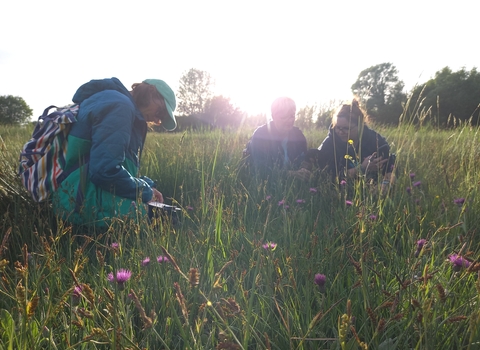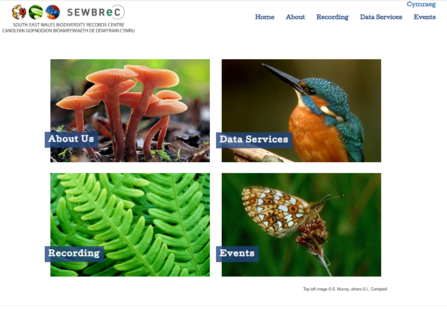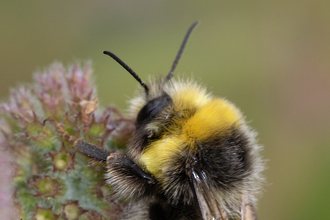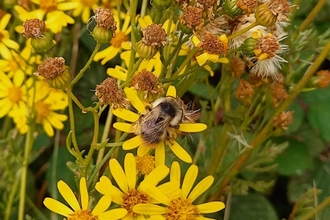I'd love to hear from anyone who wants to learn more about and help record Gwent's wonderful wildlifeCommunity Ecologist
Why record wildlife?
Tracking Changes in Nature: By recording what species are seen, where, and when, we can track changes in wildlife populations over time. This helps identify trends, such as species in decline or those expanding their range.
Protecting Habitats: Wildlife records help us pinpoint important habitats that need protection. If a rare or threatened species is found in an area, it can lead to conservation efforts to preserve that habitat.
Understanding Ecosystems: Every species plays a role in its ecosystem. Recording wildlife helps build a clearer picture of how ecosystems function and how different species interact.
Responding to Environmental Threats: Data from wildlife records can reveal the impacts of climate change, pollution, or habitat loss. This information is vital for taking action to reduce harm and support recovery.
South East Wales Biodiversity Record Centre (SEWBReC for short!) is the centre which collates, manages and shares data about wildlife in Gwent. You can submit records to them directly here or via apps like the Lerc Wales app.
There are also loads of Citizen Science projects, like bird counts and insect surveys you can get involved with locally.
Gwent's Priority Species
A healthy, thriving ecosystem needs a wide variety of species. But by focusing on just a few, we can better measure our impact and take more effective action. That’s why we’ve chosen ten priority species in Gwent for recording and conservation. Each one lives in Gwent, is under threat, and is highlighted in the Greater Gwent State of Nature Report, which means we have an established baseline. By helping these species, we’re also supporting many others that share their habitats.
We particularly need everyone's help with recording these species:
- European Hedgehog (https://www.gwentwildlife.org/cy/wildlife-explorer/mamaliaid/draenog-ewropeaidd)
- Pink 'Ballerina' Waxcap (https://www.gwentwildlife.org/cy/wildlife-explorer/fungi/pink-waxcap)
- Adder (https://www.gwentwildlife.org/cy/wildlife-explorer/reptiles/gwiber)
- Barn Owl (https://www.gwentwildlife.org/cy/wildlife-explorer/birds/birds-prey/barn-owl)
- Water Vole (https://www.gwentwildlife.org/cy/wildlife-explorer/mamaliaid/llygoden-bengron-y-dwr)
- Shrill Carder Bee (https://www.gwentwildlife.org/cy/wildlife-explorer/invertebrates/bees-and-wasps/shrill-carder-bee)
- Grayling (https://www.gwentwildlife.org/cy/wildlife-explorer/invertebrates/butterflies/grayling)
- Dipper (https://www.gwentwildlife.org/cy/wildlife-explorer/birds/thrushes-chats-flycatchers-starling-dipper-and-wren/dipper)
- European Nightjar (https://www.gwentwildlife.org/cy/wildlife-explorer/birds/swallows-swift-martins-and-nightjar/nightjar)
- Pine Marten (https://www.gwentwildlife.org/cy/wildlife-explorer/mamaliaid/bele)
National Survey Schemes
Interested in surveying and recording wildlife? We run a range of training events across the year to help volunteers build the skills and confidence in species identification to allow them to participate in National Survey schemes (such as bumblebee, harvest mice and butterfly recording). Volunteers can then take up a transect, either on one of our reserves or in a green space local to them with the help and support of our Evidence Team.
Remote volunteering
We are currently putting cameras out across Gwent to try and monitor the pine marten populations in the county. Cameras are out in the field for 6 weeks at a time, and this picks up an array of non-target species! We are looking for volunteers to help sort through this footage online, inputting records into a spreadsheet.
Contact Kath Beasley at kbeasley@gwentwildlife.org if you would like to help.

The current Water Vole Project is funded by the National Lottery Heritage Landscape Nature Networks Fund.
This work is supported by Welsh Government's Nature Networks funding and administered by the National Lottery Heritage Fund.




